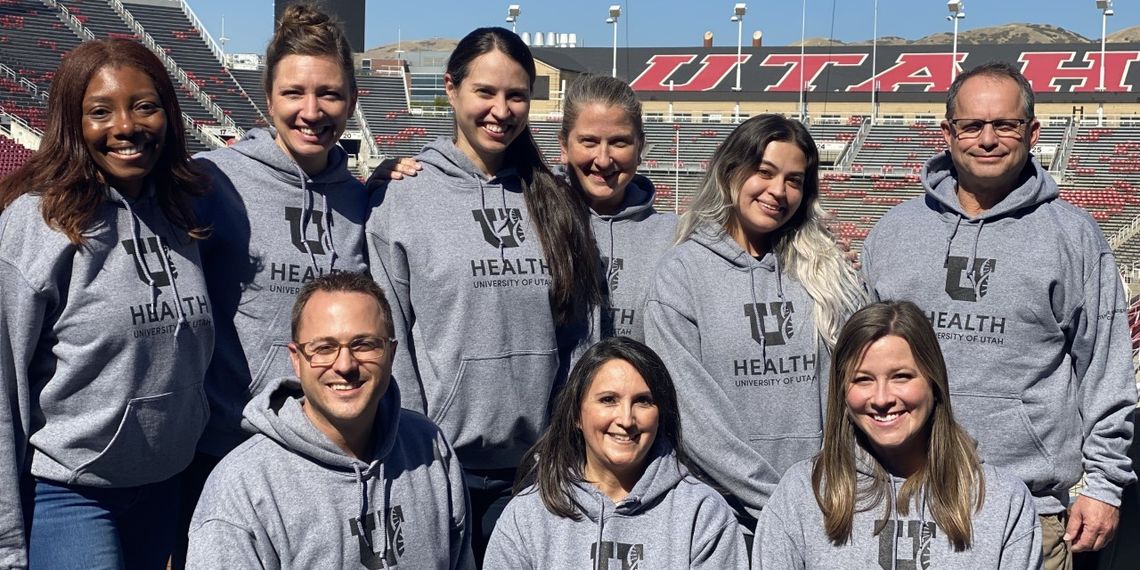niversity of Utah Health’s Intensive Outpatient Clinic (IOC) provides coordinated, comprehensive, patient-centered care for patients. Managing care as an integrated practice has its benefits and challenges. The upside is that we have a phenomenal team of interprofessional clinicians all organized around the unique needs of our specific patient population. Most of the people we care for have faced significant trauma, depression, and anxiety. Many have also experienced subsequent challenges that trauma can bring, including addiction, homelessness, and physical, emotional, or sexual abuse.
While the work is extremely rewarding for our entire team, secondary trauma is a concern. In order to provide the level of care our patients need, it can take months or years of working with a patient to build trust and see changes.
We have had to learn how to set healthy boundaries and develop healthy work habits so we can continue to be there for our patients, and for ourselves. Here’s what we’ve learned.
Stress First Aid for Health Care Workers

Stress First Aid (SFA) is a framework of practical actions that can help reduce the likelihood that stress reactions will develop into more severe or long-term problems.
1. Acknowledge exposure to chronic stress
Clinicians today experience high levels of stress – working harder, putting in longer hours, powering through the paperwork and clinic visits to keep a practice going and keep patients happy. In a place like the IOC, we also have the added challenge of caring for a complex patient population. The people we treat have experienced (and in some cases are still experiencing) a lot of trauma. That daily exposure can increase the risk of secondary trauma and personal burnout.
In order to establish clear boundaries, we had to first acknowledge the stressors we were experiencing on a regular basis and work together to prioritize our well-being. We work consistently to acknowledge the stress of this work.
2. Start with structure, then allow for individual experimentation
Creating a flexible and dynamic work environment in medicine isn’t easy. Many of us are used to having rigid protocols and workflows in place. Those can be important but may not always lead to the best care for each person. We have found that taking small, controlled steps toward flexibility in a clinic environment helps people feel more in control of the care they provide and builds trust among team members over time.
We began by establishing a strong foundation. Working together as a team, we outlined work that must be done in the clinic each week. We then gave each team member the flexibility to make small adjustments to their schedule or practice as needed for personal well-being, communicating what’s working and what isn’t each step of the way.
One outcome of these experiments is a work from home day for our social workers. While only a small reprieve, it does allow for time with pets and family in a comfortable environment and a greater sense of control over their schedule.
3. Normalize mental health by building “well time” into workflows
Health care is hard, but we often push aside discussions of our own mental health as clinicians and care providers. This might seem efficient and effective, but over time can compound the symptoms of burnout. At the IOC we recognize the value of therapy and mental well-being, and openly talk about it among our team members.
This really began when we had a team member come for an interview. Before accepting the position, she said she had her own therapy appointment each week and needed to know that hour of her time would be protected. We were amazed at her own ability to safeguard her mental health, and that empowered other members of our staff to do the same. We don’t require employees to take sick or vacation time for their mental health appointments, we consider it “well time” that helps us all be better at our jobs.
Many of us read Shel Silverstein’s The Giving Tree growing up, and in health care we often internalize similar messages – that to be considered successful, you must have sacrificed more or given more until you have nothing left to give. Instead, we need to be The Tree with Healthy Boundaries. We shouldn’t give and give until all that remains is a stump. We should give what we can to help others but keep enough for ourselves to be a healthy and thriving tree in the long term.
4. Equalize the team—every voice matters
We’ve talked a lot about the importance of self-care and individual mental health. But we also need to acknowledge the importance of a healthy team dynamic in the workplace. On our team, everyone has an equal seat at the table, regardless of title or job. Everyone’s experience and perspective are important and contribute equally to our success. It’s very much a shared culture where we’re all in this together.
The more our team members feel empowered to say they need that personal time, the better we’re able to connect with each other and carry out our mission of helping patients in the long run.
Stacey Bank
Christina J. Cackler
How do I share employee engagement feedback with my team? Chief Wellness Officer Amy Locke, Resiliency Center director Megan Call, Utah Health Academics HR leader Sarah Wilson, and Organizational Development Director Chris Fairbank explain when and how to talk with your team.
It might seem basic, but just calling someone by their name is one of the most powerful forms of recognition a physician can give their team. Moran Vision Services administrative director Brent Price and physician and vice chair Norm Zabriskie share the many lessons they learned from putting employees’ voices at the center of resilience efforts.
What can we do right now to make our work environment better? Chief Wellness Officer and family medicine physician Amy Locke shares a simple team-based model for identifying opportunities, sorting what’s feasible and impactful, and empowering the frontline to lead change.
